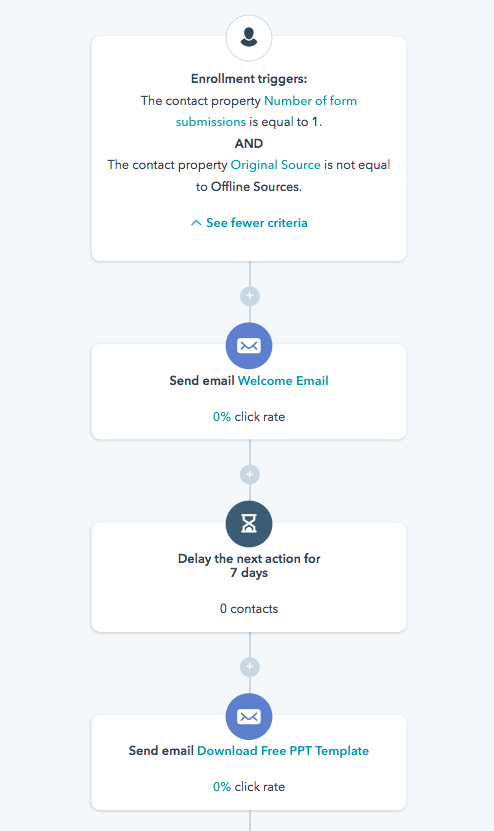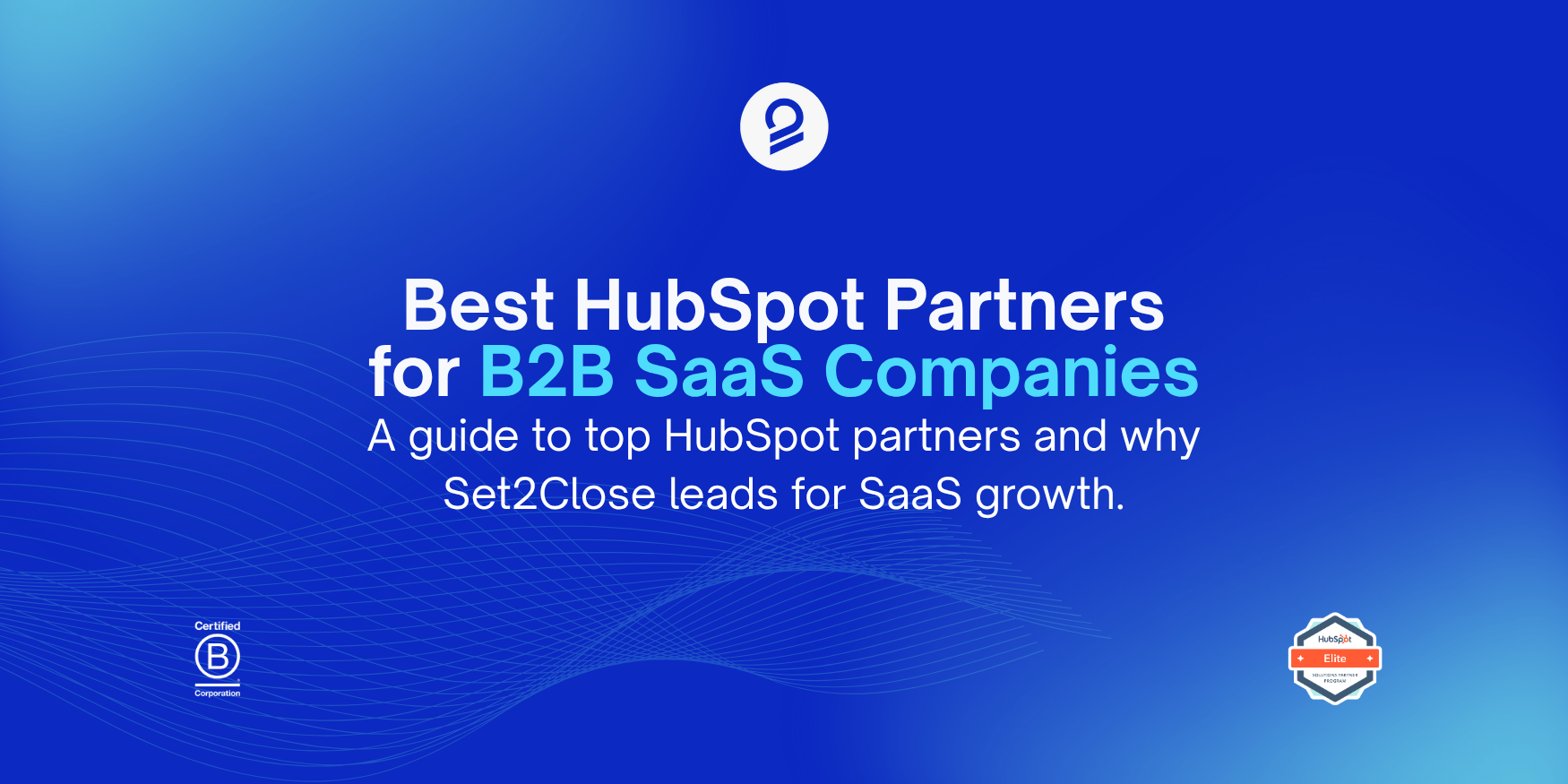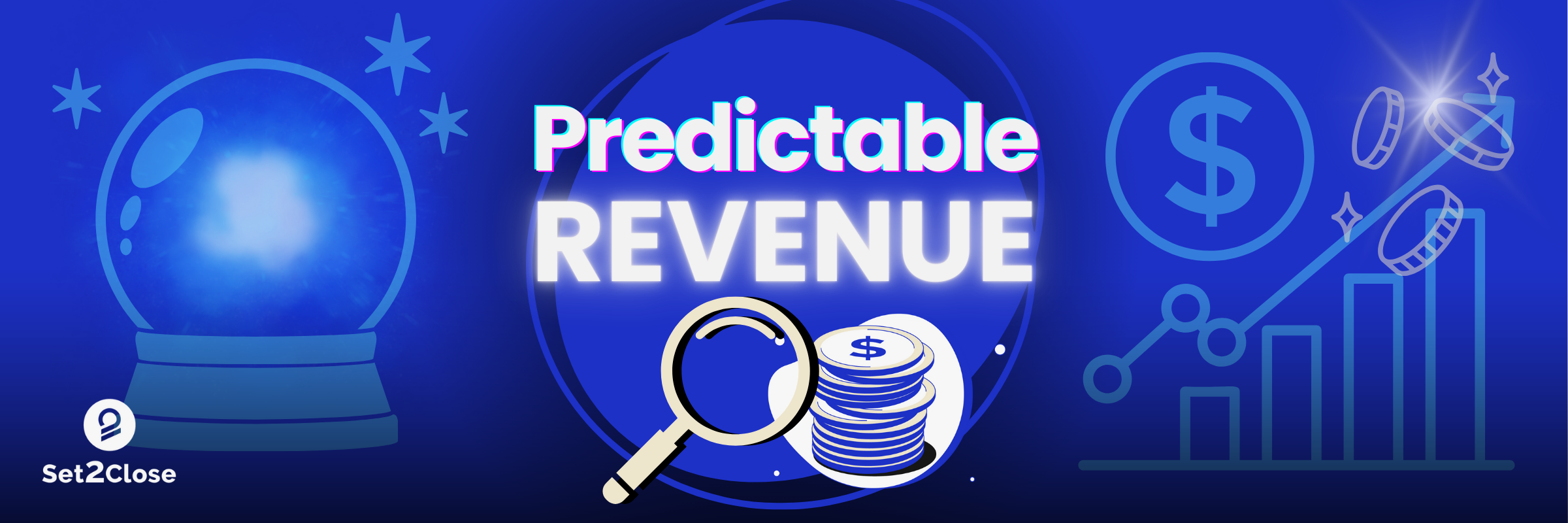HubSpot's Lifecycle Automation in B2B Marketing: A Comprehensive Guide

In today's fast-paced business environment, automation is no longer a luxury—it's a necessity. For B2B companies, lifecycle automation is a pivotal tool that streamlines the customer journey, enhancing experiences across all touchpoints. Let's delve into what lifecycle marketing entails and explore strategies to effectively move prospects through the customer journey funnel.
Understanding the Marketing Lifecycle
In marketing, a lifecycle represents the stages an individual goes through in their engagement with your brand. This journey typically begins with awareness and extends through to post-purchase interactions. Unlike B2C lifecycles, B2B relationships often span years, involving long-term contracts and ongoing collaborations.
Adopting a lifecycle approach places the customer at the heart of your strategy. By tracking behaviors and interactions at each stage, marketers gain valuable insights into their target audience. This understanding allows for tailored strategies that guide prospects from initial interest to becoming loyal advocates for your brand.
Lifecycle automation shines in this context, especially for B2B settings. It enables businesses to manage customer relationships at scale, ensuring personalized engagement without missing opportunities to nurture and convert leads.
The Four Pillars of Lifecycle Marketing
Successful lifecycle marketing rests on four foundational pillars:
-
Acquire: Attract new leads through channels like content marketing, social media, and targeted advertising. The focus here is on building awareness and providing value to potential clients.
-
Engage: Develop deeper connections with prospects through personalized communications. This stage involves direct interaction, leveraging data to address specific needs and interests.
-
Convert: Turn engaged prospects into paying customers. Strategies may include offering tailored solutions, simplifying the purchasing process, and providing compelling incentives.
-
Retain: Foster long-term relationships to encourage repeat business and loyalty. This involves continuous support, exclusive offers, and programs that add ongoing value.
In the B2B landscape, the Retain pillar is particularly crucial. Maintaining strong relationships ensures sustained revenue and can lead to partnerships that drive mutual growth over time.
Lifecycle Management vs. CRM: What's the Difference?
While both Customer Relationship Management (CRM) and lifecycle management aim to enhance customer understanding, they approach this goal differently.
-
CRM focuses on managing external interactions and relationships with current and potential clients. It tracks data like contact information, communication history, and transaction records.
-
Lifecycle Management dives deeper into the customer's journey over time, using predictive analytics to anticipate needs and behaviors. This holistic view enables more personalized and effective marketing strategies.
Integrating both approaches allows for a comprehensive understanding of your customers, combining factual data with insights into their evolving relationship with your brand.
Strategies to Propel Customers Through the Funnel
To effectively guide prospects through the customer journey, consider implementing the following automated workflows and strategies:
1. Personalization Tokens
Personalization tokens in HubSpot are dynamic placeholders that insert specific data into your communications. For instance, using a token like [Contact: First Name] automatically personalizes emails, making your outreach more engaging. Beyond names, tokens can include company details, past interactions, or purchase history, allowing for highly tailored messaging.
2. Smart Content
HubSpot's Smart content adapts dynamically based on the viewer's characteristics or behaviors. By recognizing returning visitors or identifying user segments, you can display content that's most relevant to them. For example, new visitors might see introductory information, while returning clients receive updates on services they use or exclusive offers.
3. CRM Nurturing Workflows
Nurturing workflows use "if/then" logic to progress leads through different stages of the sales funnel. By setting criteria for engagement, you can automate the transition of a contact from a Marketing Qualified Lead (MQL) to a Sales Qualified Lead (SQL). This ensures timely follow-ups and keeps potential clients moving forward in their journey.
4. Email Marketing Automation
Automated email workflows can handle everything from welcome sequences to post-purchase follow-ups. By scheduling emails based on triggers—like signing up for a newsletter or downloading a resource—you maintain consistent communication without manual effort. Personalized recommendations and timely offers can significantly increase conversion rates.
Maximizing Customer Value Through Automation
Implementing lifecycle automation strategies offers numerous benefits:
-
Scalability: Automation allows you to manage a growing customer base without sacrificing personalization.
-
Efficiency: Routine tasks are handled automatically, freeing up your team to focus on high-impact activities.
-
Enhanced Customer Experience: Timely, relevant communications improve satisfaction and build trust.
-
Data-Driven Insights: Automated systems collect valuable data, providing insights that inform future strategies.
Conclusion
Lifecycle automation is a powerful asset for B2B marketers aiming to deepen customer relationships and drive sustained growth. By focusing on the key pillars of Acquire, Engage, Convert, and Retain, and leveraging automated tools and workflows, you can create personalized experiences that resonate with your audience.
At set2close.io, we understand the importance of nurturing every stage of the customer journey. By integrating these strategies into your marketing efforts, you're not just adopting automation—you're embracing a smarter way to build lasting partnerships.
Frequently Asked Questions (FAQ) on Harnessing Lifecycle Automation in B2B Marketing
1. What is lifecycle automation in B2B marketing?
Answer: Lifecycle automation in B2B marketing refers to the use of automated technologies and processes to manage and enhance every stage of the customer's journey with your brand. It involves automating marketing, sales, and customer service activities to deliver personalized experiences, nurture leads, and build long-term relationships efficiently. This approach streamlines interactions from the initial point of contact through to post-purchase engagement, ensuring consistency and relevance throughout the customer lifecycle.
2. How does lifecycle automation differ from Customer Relationship Management (CRM)?
Answer: While both lifecycle automation and CRM aim to improve customer relationships, they focus on different aspects:
-
CRM is primarily about managing interactions and data related to current and potential customers. It stores information like contact details, communication history, and purchase records, serving as a centralized database for customer information.
-
Lifecycle automation goes a step further by using this data to automate and personalize communications and engagements throughout the customer's journey. It employs tools and workflows to deliver the right message at the right time, based on customer behaviors and predictive analytics.
Integrating lifecycle automation with CRM allows businesses to not only manage customer data but also act on it proactively to enhance customer experiences.
3. What are the four pillars of lifecycle marketing, and why are they important?
Answer: The four pillars of lifecycle marketing are:
-
Acquire: Attracting new prospects through various channels like content marketing, social media, and advertising. This stage focuses on building brand awareness and interest.
-
Engage: Developing relationships with prospects by providing valuable, personalized content and interactions. Engagement encourages prospects to consider your solutions seriously.
-
Convert: Turning engaged prospects into customers by facilitating the buying process with tailored offers, clear value propositions, and easy purchasing mechanisms.
-
Retain: Maintaining and enhancing relationships with existing customers to encourage repeat business and loyalty through ongoing support, exclusive offers, and personalized communication.
These pillars are crucial because they provide a structured framework for nurturing leads and customers at every stage, ensuring consistent and effective marketing efforts that align with the customer's needs and your business goals.
4. Why is the 'Retain' pillar particularly crucial in B2B marketing?
Answer: In B2B marketing, the 'Retain' pillar is especially important because:
-
Long-Term Relationships: B2B transactions often involve significant investments and longer sales cycles. Retaining customers leads to sustained revenue over time.
-
Higher Customer Lifetime Value (CLV): Loyal customers tend to make repeat purchases and may increase their spending as the relationship grows.
-
Referrals and Advocacy: Satisfied B2B clients can become advocates for your brand, leading to referrals and a positive reputation in the industry.
-
Reduced Acquisition Costs: It's generally more cost-effective to retain existing customers than to acquire new ones, making retention a smart investment.
Focusing on retention helps B2B companies maximize the value of each customer relationship and ensures long-term business stability.
5. What are personalization tokens, and how do they enhance marketing efforts?
Answer: Personalization tokens are placeholders in your marketing content that automatically insert specific data related to the recipient, such as their name, company, job title, or previous interactions. For example, an email greeting might say "Hello, [First Name]," where "[First Name]" is a token that gets replaced with the actual name of the contact when the email is sent.
Using personalization tokens enhances marketing efforts by:
-
Increasing Engagement: Personalized messages are more likely to capture attention and resonate with the recipient.
-
Building Relationships: Showing that you know and understand your contacts fosters trust and strengthens the connection.
-
Improving Conversion Rates: Relevant and personalized content can lead to higher response rates and encourage prospects to take desired actions.
6. How does smart content improve the customer experience?
Answer: Smart content, also known as dynamic or adaptive content, changes based on the viewer's characteristics, behaviors, or preferences. It improves the customer experience by:
-
Providing Relevance: Visitors see content that is specifically tailored to their interests, needs, or stage in the buyer's journey.
-
Enhancing Engagement: Relevant content keeps users on your site longer and encourages interaction.
-
Streamlining Navigation: By presenting the most pertinent information upfront, smart content reduces the effort required for visitors to find what they need.
-
Personalizing Experiences at Scale: Even with a large audience, smart content allows for individualized experiences without manual customization.
Examples include displaying different homepage messages for new visitors versus returning customers or showing product recommendations based on past purchases.
7. What are CRM nurturing workflows, and why are they important?
Answer: CRM nurturing workflows are automated processes that guide leads and customers through the sales and marketing funnel using predefined rules and triggers based on their behaviors and attributes. They are important because they:
-
Ensure Timely Follow-Up: Automate responses and next steps, so no lead falls through the cracks.
-
Personalize Communication: Send targeted messages that are relevant to the recipient's interests and stage in the buyer's journey.
-
Increase Efficiency: Save time and resources by automating repetitive tasks, allowing teams to focus on strategic activities.
-
Improve Conversion Rates: Nurtured leads are more likely to convert into customers due to consistent and relevant engagement.
By leveraging CRM data, these workflows help maintain momentum with prospects and customers, fostering relationships that lead to sales.
8. How can email marketing automation boost conversion rates?
Answer: Email marketing automation boosts conversion rates by:
-
Delivering Timely Messages: Automated emails are sent based on specific triggers, ensuring that messages reach recipients at optimal times.
-
Personalizing Content: Automation allows for segmentation and personalization, so recipients receive content that matches their interests and needs.
-
Nurturing Leads: Automated sequences can guide prospects through the sales funnel with educational content, promotions, and calls to action.
-
Re-engaging Inactive Contacts: Automation can identify and target contacts who haven't engaged recently, reigniting their interest.
Overall, email automation enhances the effectiveness of your campaigns by ensuring consistent, relevant, and strategic communication with your audience.
9. What are the key benefits of implementing lifecycle automation strategies in B2B marketing?
Answer: Key benefits include:
-
Scalability: Handle increased volumes of leads and customers without overwhelming your team.
-
Efficiency: Automate routine tasks to focus on high-value activities like strategy and relationship building.
-
Consistency: Ensure every prospect and customer receives the appropriate communication at the right time.
-
Personalization: Deliver tailored experiences that meet individual needs, improving satisfaction and loyalty.
-
Data-Driven Insights: Collect and analyze data to refine marketing efforts and make informed decisions.
-
Improved ROI: Increase conversions and retention rates, leading to better return on marketing investments.
Lifecycle automation helps B2B marketers create more effective campaigns that drive growth and competitive advantage.
10. How can set2close.io assist businesses with lifecycle automation?
Answer: Set2close.io can assist businesses by:
-
Consulting and Strategy Development: Offering expert guidance on creating effective lifecycle automation strategies tailored to your business goals.
-
Implementing Automation Tools: Helping select and set up the right automation platforms and software to meet your needs.
-
Creating Personalized Content: Assisting in developing personalized messaging and content that resonates with your audience.
-
Training and Support: Providing ongoing support and training to ensure your team can effectively manage and optimize automation processes.
-
Data Analysis and Optimization: Analyzing performance metrics to refine strategies and improve results over time.
By partnering with set2close.io, businesses can leverage expertise to successfully implement lifecycle automation and achieve better marketing outcomes.
Related Articles

Best HubSpot Partners for B2B SaaS Companies
Overview: How to Choose the Right HubSpot Partner for SaaS 1 Understand what your SaaS growth challenges are and align them with agency strengths. 2 Match services like CRM build out,...